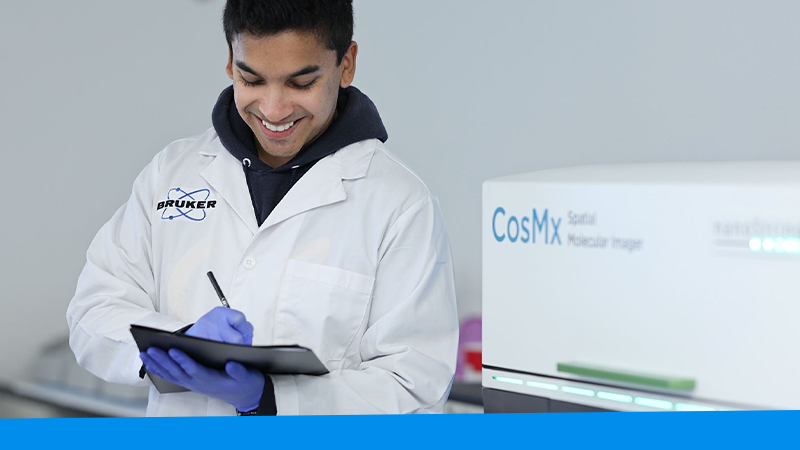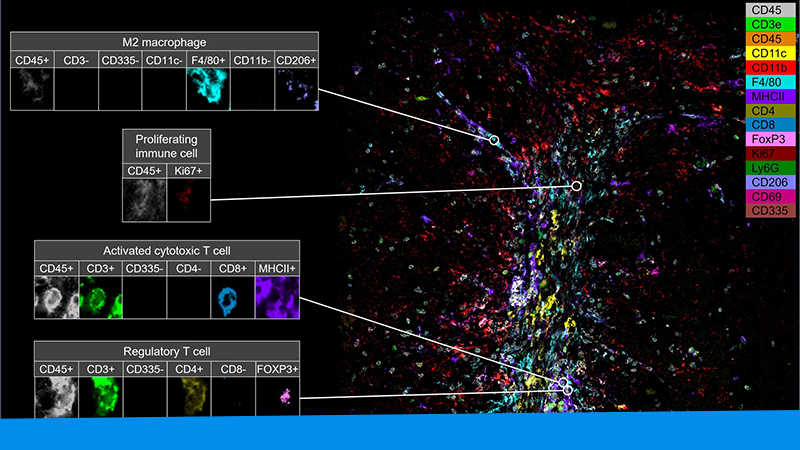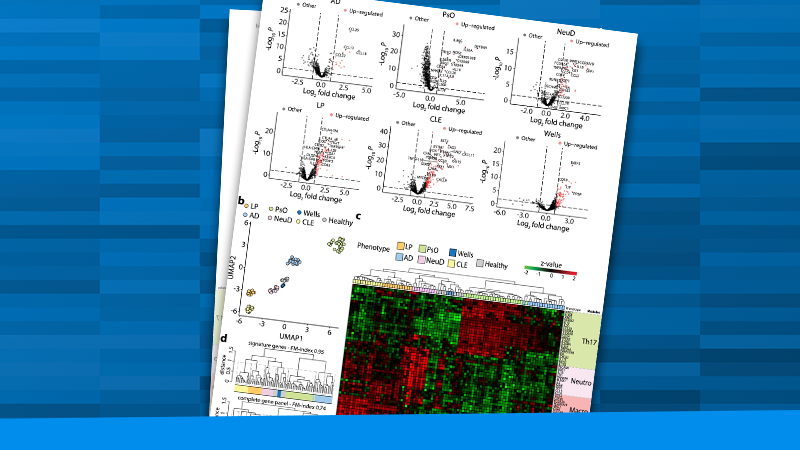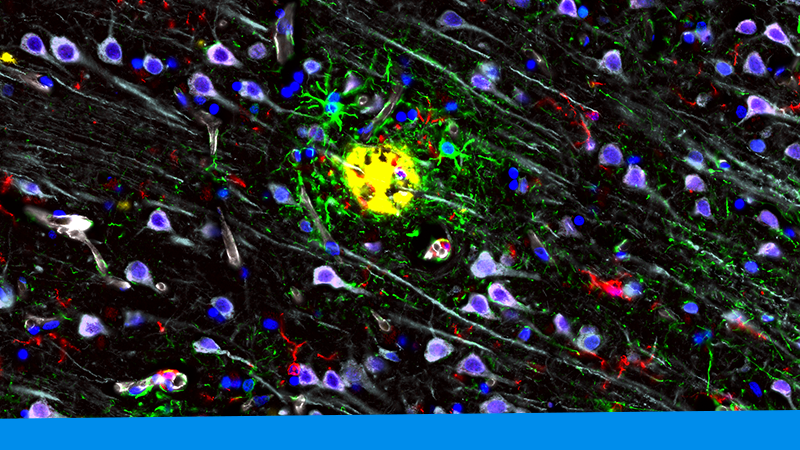February 2025 Newsletter

The field of spatial biology continues to push the boundaries of discovery, transforming how we understand complex biological systems at a spatial resolution. From cancer research to neuroscience, the ability to map cellular interactions with precision is shaping the future of scientific advancements. In this edition, we spotlight the latest innovations, along with upcoming events, FAQs, and exclusive promotions you won’t want to miss.
What's New
Featured Events
Bruker Spatial Biology reveals groundbreaking innovations at AGBT 2025, reinforcing its leadership in spatial biology. Key announcements include the launch of the CosMx® Whole Transcriptome Panel (WTX) for single-cell spatial whole transcriptomics, the introduction of the PaintScape™ platform for 3D genome visualization, the expansion of GeoMx® DSP to a 1,000-plex protein assay, and the release of the CellScape™ PowerOMX™ Engine for enhanced spatial proteomics. Additionally, Bruker is launching the Sapphire Spatial Program for premium customer support, introducing The Galaxy Spatial Tour, a global spatial biology roadshow coming to a city near you, and expanding its partnership with Weill Cornell Medicine on the Spatial Atlas of Human Anatomy (SAHA) initiative.
Upcoming Events
AGBT 2025
Spatial Biology Beyond Limits: Exploring Comprehensive Integrated Technologies for Spatial Multiomics
Discover integrated technologies for spatial multiomics in this exclusive presentation. Bruker Spatial Biology offers comprehensive solutions—no compromises needed.
Webinar: Spatial Biology Beyond Limits
Date: March 12, 8:00 AM PDT

ABRF 2025
Bruker Spatial Biology is proud to be a Gold Sponsor at the ABRF 2025 Annual Meeting from March 23-26. Visit Booth #110 to explore our comprehensive gene expression and high-plex multiomic solutions. Join our concurrent plenary presentation on March 25 at 4:30 PM to learn how the CellScape™ Precise Spatial Proteomics platform equips core labs to provide the scientific community with advanced single-cell proteomics.
Don't Miss Out: Limited-Time Promos!
Don’t Get Left Behind- Why You Need an nCounter Pro Today

The nCounter Pro is our latest generation of nCounter instrument! But did you know that Bruker is heavily investing in developments that will only be available on the nCounter Pro platform?
Here are the 3 top reasons why you need an nCounter Pro today:
- Access an upgraded operating system and advanced security features.
- Generate highly reproducible expression data on 800+ targets with zero enzymatic steps. Use a simple automated workflow that requires only 15 minutes of hands-on time. Compatible with even the most difficult sample types, such as FFPE, you get robust performance that drives biomarker discovery and development.
- In 2025 and beyond Bruker Spatial Biology will be introducing new capabilities on the nCounter Pro Analysis System. This includes supporting multiomics, expanding the portfolio of application-based panels and enhancing data analysis features.
Take advantage of savings when you upgrade your current nCounter system to the new nCounter Pro!
February is Heart Month, a time dedicated to raising awareness about heart disease and how to prevent it!

Did you know that we too are doing our part in helping advance CVD research? Our nCounter CVD Pathophysiology Panel enables researchers to explore how cardiovascular disfunction contributes to heart disease, hypertension and arteriosclerosis. Researchers are also studying the cardiotoxic effects of immune therapies and assessing the role of aging and cell renewal in cardiac regenerative medicine.
Work in the field of cardiovascular research? Explore how our simple, actionable answers can expedite your CVD research today.
Contact us to discuss special Heart Month promotions.
No instrument? No problem.

Unlock the power of the CosMx® Spatial Molecular Imager (SMI) platform through Canopy Multiomic Services. Enjoy 20% savings if you start your project by March 31.
Resource Spotlight
Overcome challenges with scRNA-seq AND get spatial context with CosMx SMI
Overcome six key challenges in scRNA-seq research with the CosMx 6K Discovery Panel. Single-cell RNA sequencing (scRNA-seq) unlocks insights at the single-cell level, but challenges like data complexity, cost, and time can slow progress.
The CosMx 6K Discovery Panel tackles six key hurdles in scRNA-seq research, offering high-plex analysis across virtually all of the reactome. This powerful tool enables comprehensive single-cell spatial analysis, helping researchers drive discoveries with greater precision and efficiency.
6 Key Challenges in scRNA-seq Solved with the CosMx 6K Discovery Panel
Single-cell RNA sequencing (scRNA-seq) offers transformative insights but comes with significant challenges, including:
- Subsampling Workflow
- High Sequencing Costs
- Data Analysis Complexity
- Poor Cell Capture Efficiency
- Partial Cell Coverage and State
- Difficulty of Scaling
The CosMx 6K Discovery Panel addresses these barriers head-on, enabling high-plex analysis across the reactome for deeper, more efficient single-cell spatial insights.
Watch this video to see how the CosMx 6K Discovery Panel tackles these challenges.
CellScape™ Precise Spatial Proteomics in the Spotlight – Mapping Glioblastoma’s Secrets

The image above highlights Dr. Mara De Martino’s groundbreaking research at Weill Cornell Medicine, using our CellScape platform to uncover new insights into glioblastoma. By integrating CellScape with advanced omics tools like MALDI, her team revealed how radiation therapy reprograms tumor metabolism and reshapes immune cell landscapes. Through precise spatial analysis, they visualized everything from fatty acid buildups to dynamic immune infiltrates, including dendritic cells and T cells, shedding light on immune evasion and potential treatment strategies.
This is spatial biology at its finest—bringing clarity to the intricate interactions between tumor cells and their microenvironment.
Publications
Advancing Precision Medicine for Inflammatory Skin Diseases

Researchers at CHUV used the nCounter® Analysis System to identify key immune pathways across multiple skin conditions. Their findings refine diagnostics and support personalized treatments.
The Right Tools for Alzheimer's Disease

Dr. Miranda Orr’s Alzheimer’s research, recently featured in Nature, explores the link between tau buildup, aging, and cellular senescence using our spatial biology technologies:
- GeoMx® Digital Spatial Profiler (DSP) maps tau isoforms and phosphorylation states across the transcriptome and >600 proteins.
- CosMx SMI reveals single-cell spatial niches of senescent cells and tau tangles.
- CellScape PSP validates markers and generates high-resolution images of key proteins and interactions.
These tools uncover new spatial signatures of tau, advancing our understanding of Alzheimer’s disease.
ICYMI (In Case You Missed It)
Watch On Demand
Discover how the GeoMx DSP uniquely interrogates the whole transcriptome and +570 proteins from the same slide. Hear from pathologist Nic Reitsam about their research on tumor-adipocyte interactions and how they are embracing discovery in multiomics.
Unlock the Future of Spatial Biology — Hear from the Experts!
Cutting-edge research is happening now, and spatial biology is at the forefront of disruptive discoveries. Hear the testimonials from the newest generation of scientists as they share their real-world experiences using CosMx SMI and GeoMx DSP. Discover how spatial biology is pushing the boundaries of cancer, neuroscience, and pathology research, and paving the way for future breakthroughs.
Panel Building with EpicIF Technology
What if you could build a novel 30-plex assay in just a few weeks? With EpicIF technology on our CellScape platform, you can. We’ve highlighted just how easy it is to create the high-plex panel you need for your research using Enhanced Photobleaching in Cyclic Immunofluorescence (EpicIF) technology in a recent webinar with Dr. Oliver Braubach, Director of R&D at Bruker Spatial Biology. View the webinar on-demand for the following highlights:
- Get It Right the First Time: Integrate 22 new antibodies into a 30-plex human FFPE brain panel in under 4 weeks – 85% success, even with phosphorylated targets!
- Gentle, Powerful Signal Removal: Ultra-fast signal removal on any organic dye in seconds, not minutes
- The Gang’s All Here: More than 6,000 antibodies readily available for direct IF on the CellScape system
FAQs
Supercharge Your GeoMx® DSP NGS Prep with Automation
Tired of spending hours on NGS prep? Automation changes the game—cutting hands-on time, increasing throughput, and reducing errors. Our Technology Access Program put this to the test and saw 3x higher study throughput and 11% fewer resequencing errors.
Why go automated?
- Less manual work – Liquid handlers take over PCR setup, pooling, and purification.
- More samples, less hassle – Process up to 480 unique samples in one run.
- Fewer mistakes – Automated precision means fewer errors and less wasted sequencing.
With more consistent results and fewer headaches, automation lets you focus on what really matters—your research.
Check out the full details in our latest white paper: High-Throughput Automated NGS Library Prep
Follow us for more ways to make your workflow smoother!